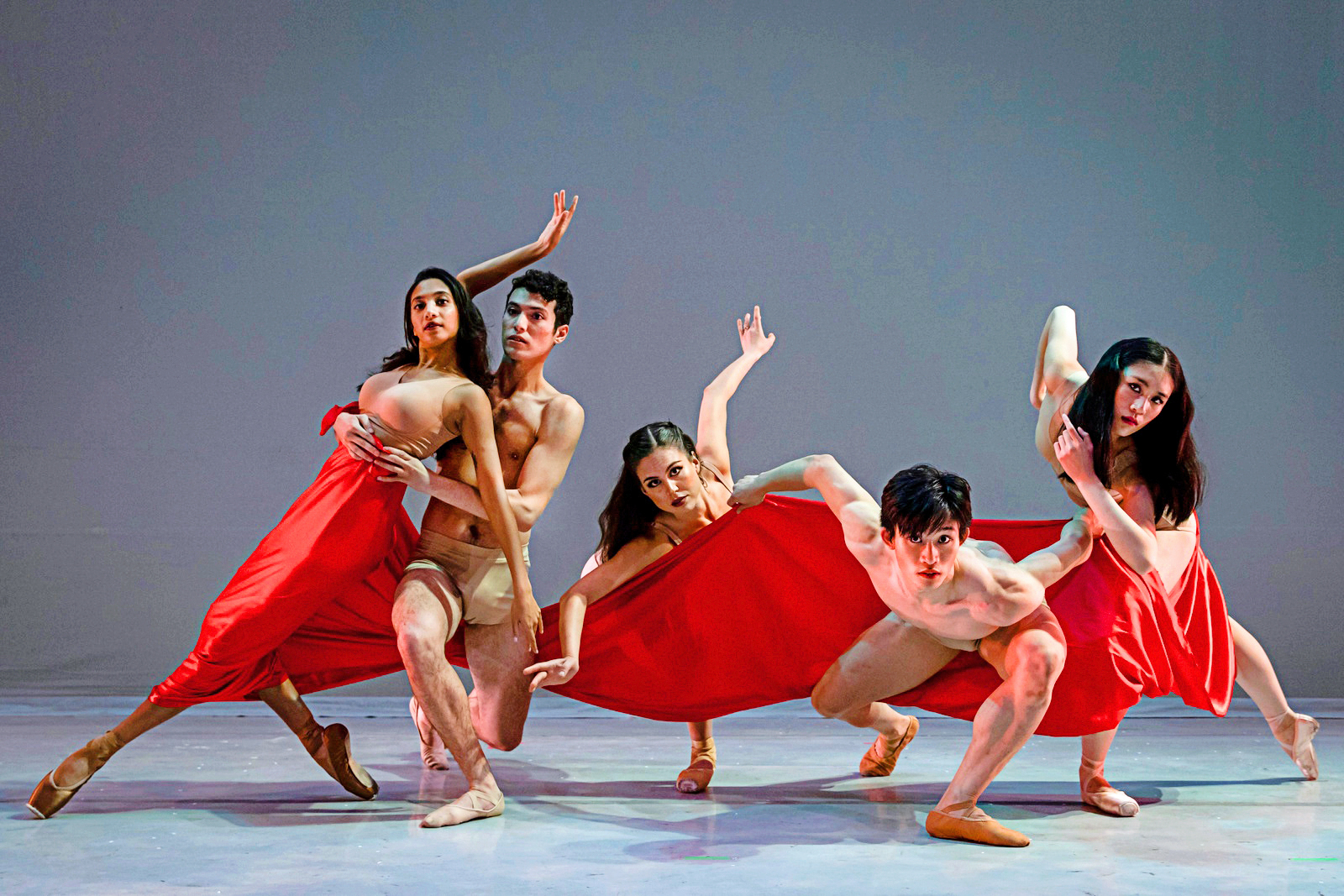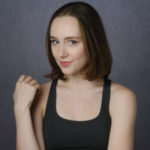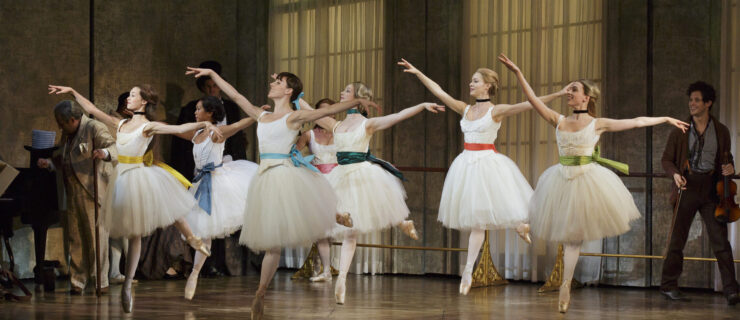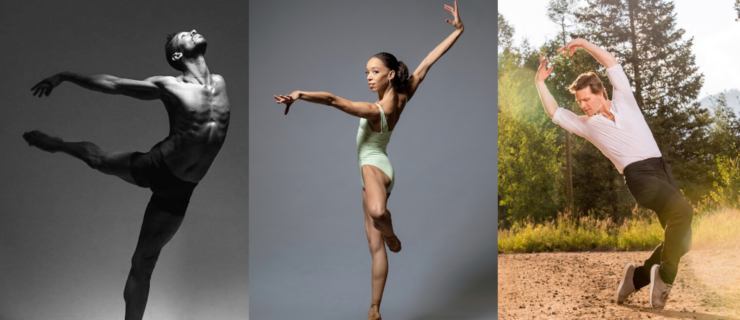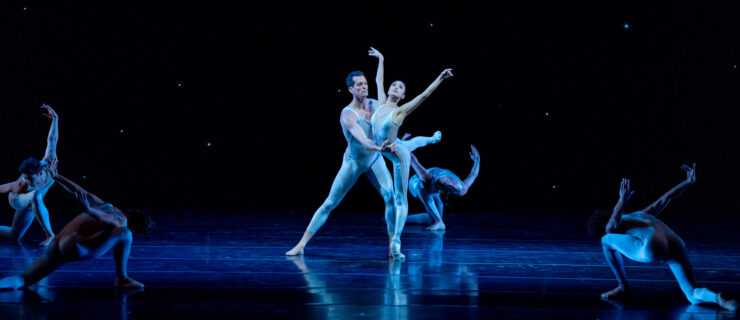Three Choreographers, One Experiment: The World Premiere of Exquisite Corpse at Oakland Ballet
Oakland Ballet made waves last year with its inaugural Dancing Moons Festival, a new ballet festival dedicated entirely to works by Asian American Pacific Islander artists. Now an annual event, the festival returns this year to Bay Area audiences with a world premiere and a second venue.
Alongside Caili Quan’s Layer Upon Layer and Final Bow for Yellowface co-founder Phil Chan’s Amber Waves and Ballet des Porcelaines, the program includes the world premiere of Exquisite Corpse. Co-choreographed by Chan, Elaine Kudo and Seyong Kim, this experimental new ballet is inspired by a Surrealist parlor game of the same name created in 1925. In the game, players take turns drawing sections of a body on a sheet of paper that is folded to hide each contribution; once unfolded, the often bizarre and disjointed end result is the “exquisite corpse.”
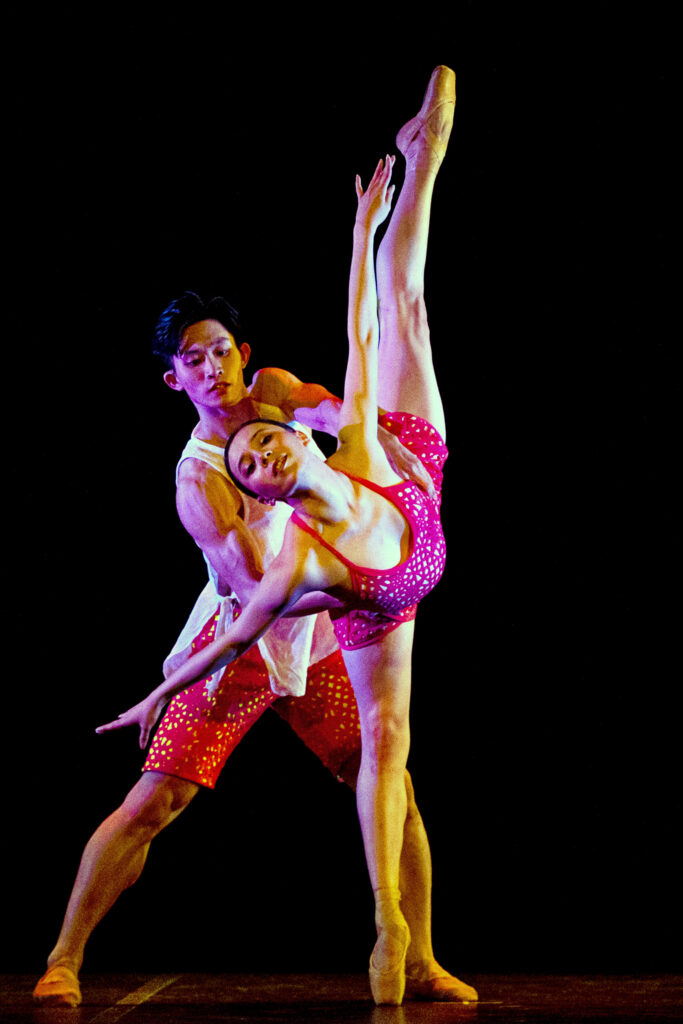
For their unique ballet version, Chan, Kudo and Kim have individually choreographed a “head” (solo), “torso” (group) and “legs” (duet) section independently of each other. Kudo, who is also a ballet mistress at The Washington Ballet, has been tasked with the final step of weaving the nine pieces together. The end result, as Chan tells Pointe, is a complete mystery until then.
“It takes quite a postmodern approach to dancemaking,” he continues. “There’s a bit of chance. It’s fun pushing ballet into the future by taking a postmodern idea and putting it onto a dance form that came out of the courts of France and Italy!”
This year, the three choreographers and the Oakland Ballet dancers have also been tasked with the challenge of preparing the program for two different venues: San Francisco’s Presidio Theatre and the Oakland Asian Cultural Center, the latter of which requires performance in the round.
Pointe spoke with Chan to learn more.
The Dancing Moons Festival is the only program featuring entirely AAPI choreographers and hosted by a ballet company in the U.S. What does it mean for the festival to now be an annual event?
It’s super-exciting. Innovation in any field traditionally comes from off-center—not the mainstream. In this case, empowering underrepresented voices to make new work is really exciting and interesting. Even being part of the festival last year and seeing the diversity in our offerings within just one racial group shows you how much untapped potential we have here to push the art form forward.
How did the idea for Exquisite Corpse come about?
[OB artistic director] Graham Lustig is the visionary behind the festival and making lanes for us to experiment. It came from his desire to have a greater sense of collaboration, not just another triple bill where the pieces already have little to do with each other; he wanted us to see if we could find a greater way to collaborate. As this conversation was happening, I was with some of my friends one night, and we started playing exquisite corpse. I thought, “Oh, what a great way to collaborate with two other artists!”
We’ve done [exquisite corpse] with visual arts quite commonly, but not so much with movement and dance. It was also a convenient way to collaborate with these artists, who I’ve not worked with directly. We might have very different styles, but how can we, in a playful way, put our work together to make one piece? It seemed like a fun challenge.
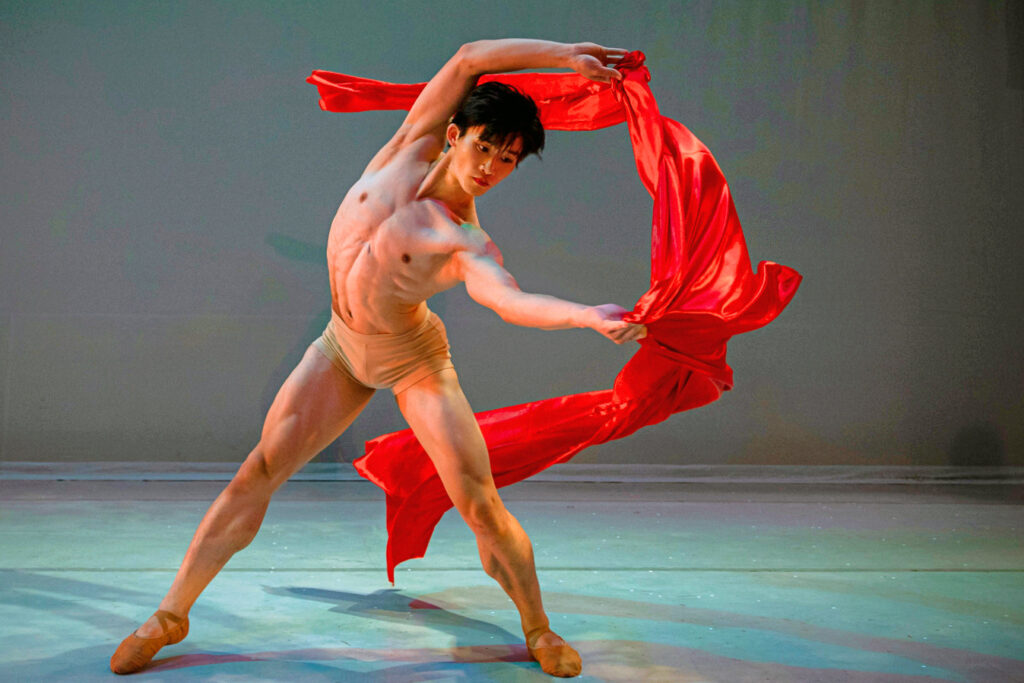
Each of the choreographers is creating a “head,” “body” and “legs” for this ballet. What do yours look like?
My first-section quartet is to music by Michael Nyman. It’s fast and furious and plays with a lot of patterns in the round and people spiraling in and out of each other. The duet is to a piece by Gabriel Prokofiev (he’s the grandson of Sergei Prokofiev, so his music remixes a lot of old orchestral pieces), and it’s my percussive piece. The dancers go through some of the childhood games we play, like hopscotch, double Dutch and rock-paper-scissors. Then the solo is to an old song—there are these beautiful old songs from the ’40s fusing Western “rumba” music and Chinese vocals. It’s playful, light and virtuosic.
What other parameters do each of you have choreographically?
The rules were [to integrate] something old, something new and something percussive. One of my favorite constraints is that we’re performing at two different venues, so everything we made had to look good in both a round presentation as well as a front-facing presentation.
I love working in the round. I think it’s especially fun because, if you go back in history, Baroque dance was also done in the round and in peoples’ ballrooms! So in some ways, we think of contemporary ballet as this forward departure, but we’re actually taking a step back at the same time toward its origins.
What do you anticipate the piece will look like?
I feel like the piece will be disjointed, Surrealist and abstract, like a weird buffet of dance. But I think if an audience goes into it knowing that that’s what they’re getting, like how you go into a buffet expecting a lot of different foods, they’ll be into it. It will be interesting to see how different dancemakers interpret this challenge—how we interpret it in a similar way, and how we take radically different directions. I think even just asking these questions of choreographers and seeing what they make will be fun for the audience.
I have no idea what [Elaine Kudo’s] and [Seyong Kim’s] pieces look like. That’s part of the exquisite corpse process. I don’t even know the music they’re using! It might work, it might not work, but that’s the experiment and part of the fun.
Any parting thoughts?
It’s often as artists of color that we’re pitted against each other because there are so few opportunities, and it can feel like we’re fighting for scraps. So this process of creating something together in a dedicated lane just for us is so refreshing. We don’t have to operate from a scarcity mindset as a community; we can afford to make mistakes and even be mediocre, dare I say it!
As an industry, we’re really starting to open those doors—for everybody to get more opportunities, and for there to be an audience for all of us. I hope that this trend continues and that eventually we’ll think, “Oh, there just happen to be Asian people making work,” as opposed to, “We have to have a dedicated lane for Asians in this program,” because that means the default will always be white. This Dancing Moons Festival is a stepping stone.
The 2023 Dancing Moons Festival runs March 16–18 at the Oakland Asian Cultural Center and April 7–8 at the Presidio Theatre.
